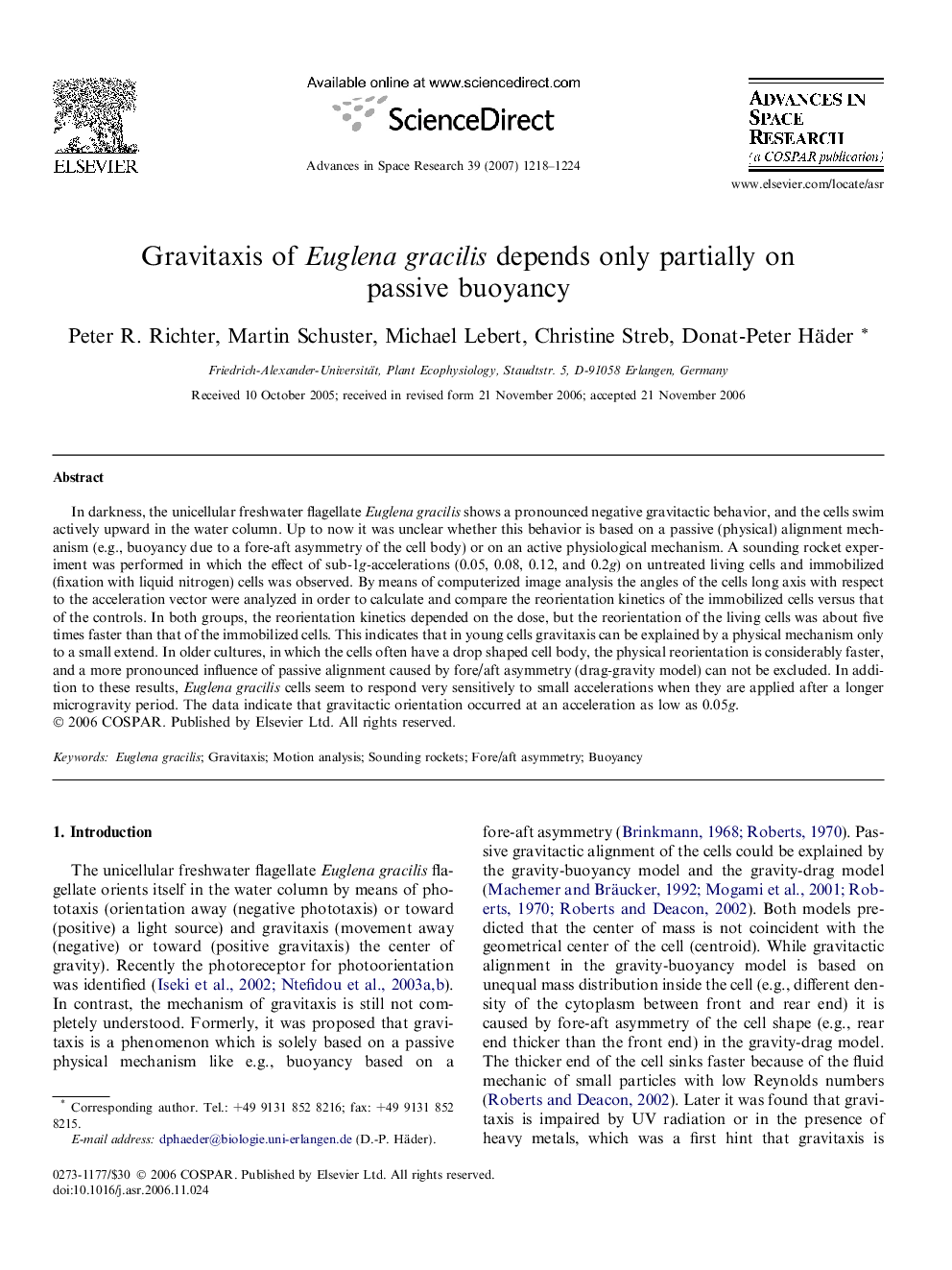| Article ID | Journal | Published Year | Pages | File Type |
|---|---|---|---|---|
| 1768954 | Advances in Space Research | 2007 | 7 Pages |
In darkness, the unicellular freshwater flagellate Euglena gracilis shows a pronounced negative gravitactic behavior, and the cells swim actively upward in the water column. Up to now it was unclear whether this behavior is based on a passive (physical) alignment mechanism (e.g., buoyancy due to a fore-aft asymmetry of the cell body) or on an active physiological mechanism. A sounding rocket experiment was performed in which the effect of sub-1g-accelerations (0.05, 0.08, 0.12, and 0.2g) on untreated living cells and immobilized (fixation with liquid nitrogen) cells was observed. By means of computerized image analysis the angles of the cells long axis with respect to the acceleration vector were analyzed in order to calculate and compare the reorientation kinetics of the immobilized cells versus that of the controls. In both groups, the reorientation kinetics depended on the dose, but the reorientation of the living cells was about five times faster than that of the immobilized cells. This indicates that in young cells gravitaxis can be explained by a physical mechanism only to a small extend. In older cultures, in which the cells often have a drop shaped cell body, the physical reorientation is considerably faster, and a more pronounced influence of passive alignment caused by fore/aft asymmetry (drag-gravity model) can not be excluded. In addition to these results, Euglena gracilis cells seem to respond very sensitively to small accelerations when they are applied after a longer microgravity period. The data indicate that gravitactic orientation occurred at an acceleration as low as 0.05g.
